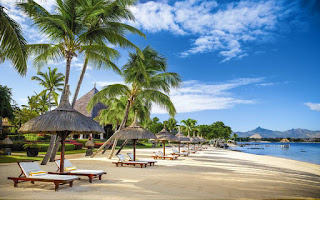Africa's best 10 countries for business
Africa’s 10 best countries for business
The Forbes Magazine unveiled the best countries for business for 2015. A list of 144 countries has been compiled. The criteria involved 11 different factors including property rights, innovation, taxes, technology, corruption, freedom, red tape, investor protection and stock market performance. Information used for the criteria was obtained from sources such as Freedom House, Heritage Foundation, Property Rights Alliance, Transparency International, World Bank Group and World Economic Forum.
From the Forbes list, Afropreneur has compiled a list of 10 best African countries for business.
Here is the list of Africa’s top countries for business:
1. Mauritius: Gross Domestic Product (GDP) $13 Billion.
The country is number one in Africa but ranks number 37 in the world. According to Forbes
Mauritius has undergone a remarkable economic transformation from a low-income, agriculturally based economy to a diversified, upper middle-income economy with growing industrial, financial, and tourist sectors. It attained its independence in 1968.
The country’s GDP has been growing in the range 3-4% between 2010 and 2014.
 |
| Johannesburg |
2. South Africa: GDP, $350 Billion.
Population: 53.7 Million.
According to Forbes, South Africa is a middle-income, emerging market with an abundant supply of natural resources; well-developed financial, legal, communications, energy, and transport sectors; and a stock exchange that is Africa’s largest and among the top 20 in the world.
Unstable electricity supply has retarded growth with the economic growth slowing to 1.5% in 2014.
This has resulted in many sectors of the economy being affected by blackouts due to load shedding.
Other factors affecting the country include skills shortage, declining global competitiveness as well as frequent strike action.
3. Morocco: GDP, $113 Billion
Population: 33.3 million.
Morocco has capitalized on its proximity with Europe to build a diverse, open, market oriented economy.
Its key sectors include agriculture, tourism, aerospace, phosphates, textiles, apparel and subcomponents.
Though Morocco is ahead on many African countries, unemployment, poverty and illiteracy are still rife especially in rural areas.
 |
| Morocco |
4. Botswana: GDP, $16 Billion
Population: 2.2 Million.
Botswana is the best credit risk country in Africa. Forbes Magazine says the country’s diamond dependent economy has maintained one of the world's highest economic growth rates since independence in 1966.
Botswana is also reported to have transformed itself from one of the world’s poorest countries to a middle-income country with per capita GDP of $16 600 in 2014.
Key economic factors are tourism, financial services, subsistence farming, and cattle raising.
5. Cape Verde: GDP, $2 Billion
Population: 500 000
Cape Verde’s economy is service-oriented with commerce, transport, tourism, and public services accounting for about three-fourths of GDP. Tourism is a major part of the country with its dependence on conditions in the euro zone countries.
The country imports most of what is consumed due to poor water supply as well as long term droughts.
6. Rwanda: GDP, $8 Billion
Population: 12.7 Million.
It has the densest population in Africa.
About 90 % of Rwanda’s population is engaged in subsistence farming. Rwanda’s main sources of income are tourism, minerals, coffee and tea.
The country has an average annual GDP growth of 7%-*% though a significant percent of the population still live below the poverty line.
Rwanda embraced expansionary fiscal policy to reduce poverty by improving education, infrastructure, and foreign and domestic investment and pursuing market-oriented reforms.
7. Zambia: GDP, $26 Billion
Population: 15.1 Million
Zambia has had one of the world’s fastest growing economies for the past ten years, with real GDP growth averaging roughly 6.7% per annum.
Its dependency on copper makes it vulnerable to depressed commodity prices, but record high copper prices and a bumper maize crop in 2010 helped Zambia rebound quickly from the world economic slowdown that began in 2008, Forbes Magazine reported.
8. Ghana: GDP, $35 Billion
Population: 26.3 Million
Endowed with natural resources, Ghana has a market-based economy with relatively few policy barriers to trade and investment in comparison with other countries in the region.
Major sources of foreign exchange are gold and cocoa exports, and individual remittances.
Ghana however is still hampered by lack of consistent electricity.
9. Tunisia: GDP, $49 Billion.
Population: 11 Million
Following an ill-fated experiment with socialist economic policies in the Tunisia’s key exports include textiles and apparel, food products, petroleum products, chemicals, and phosphates, with about 80% of exports bound for Tunisia's main economic partner, the European Union.
The country still faces the challenge of bringing down unemployment, reducing economic disparities between the more developed coastal region and the impoverished interior.
10. Namibia: $12 Billion
Population: 2.2 Million
Namibia’s mining accounts for 11.5% of the country’s GDP yet provides more than 50% of foreign exchange.
Namibia is also the fifth world’s largest producer of uranium. It also produces large quantities of zinc and is a smaller producer of gold and copper. The mining and quarrying sectors employ less than 2% of the population.




Comments
Post a Comment